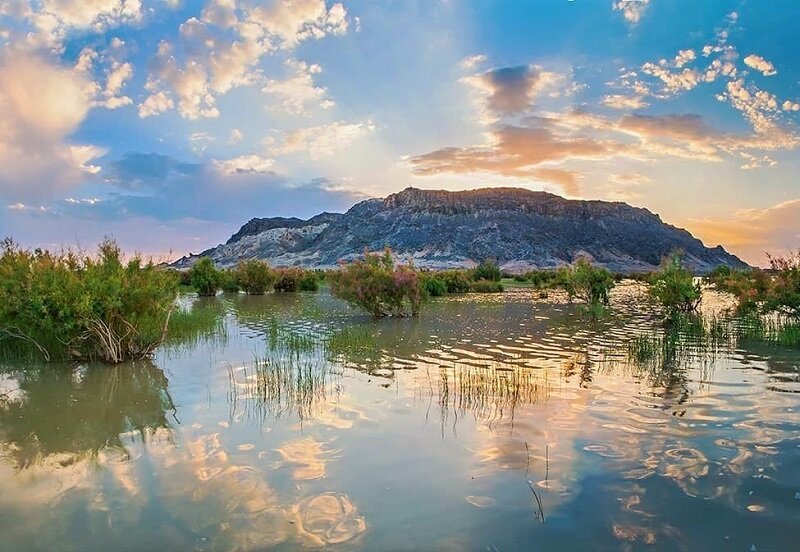Quick-win projects aim to revive Hamoun Wetland

TEHRAN – The Department of Environment (DOE) and the United Nations Development Program (UNDP) are reviewing small quick-win projects aiming to facilitate Hamoun Wetland restoration.
Ahmad Reza Lahijanzadeh, deputy chief of the DOE for the marine environment, met with UNDP Representative in Iran Claudio Providas in the "Second meeting of the committee for the review and approval of effective small quick-win projects", held online on Wednesday.
About 70 projects have been sent to the Sistan Project, which are being reviewed during expert meetings with the local community and experts from the related bodies, he stated, IRNA reported on Wednesday.
“Enhancing integrated natural resource management for the restoration of wetland ecosystems and support to alternative livelihoods development of local communities”, abbreviated as the Sistan Project is a joint project between the DOE and UNDP, and is funded by the European Union.
Small quick-win projects seek solutions to reduce problems related to natural resources, climate change, and livelihood improvement. Launched in 2020, the project’s main objectives include efforts for integrated management of natural resources and socio-economic development of the Sistan region with emphasis on supporting alternative livelihoods in line with competitive advantages.
Neda Filsafi, Sistan project manager said that these plans are specifically designed to engage actors who have a particular or distinct view of development or represent people who have been deprived of the development process and who have the ability to come up with empirical or innovative solutions to overcome deprivation or deal with development challenges.
These plans are implemented with due consideration of the following goals and focus on “Tourism, Handicrafts and Cultural Development”, “Women’s Economic Empowerment”, “Agriculture and Livestock”, “Fisheries and Aquaculture”, “Entrepreneurship and Development of Small and Medium-sized Enterprises”, “Soil, Water and Wetland Management” and “Trade and Commerce”.
Small quick-win projects seek solutions to reduce problems related to natural resources, climate change, and livelihood improvement and identify possible solutions to test and benchmark development challenges with an emphasis on the application of indigenous knowledge.
The Hamouns are transboundary wetlands on the Iran-Afghan border made up of three lakes: Hamoun-e Helmand, which is entirely in Iran, Hamoun-e Sabari on the border, and Hamoun-e Puzak, almost entirely inside Afghanistan. The three lakes are linked and fed by water from the Helmand River which starts in the Hindu Kush Mountains in Afghanistan.
In the last two decades, once fertile wetlands have drastically dried up. The Taliban government closed the sluices to the Kajaki Dam on the Helmand until 2002, which aggravated the impact of the worst drought the region has experienced in many decades, brought about partially by climate change and warming temperatures.
Disputes over transboundary water between Iran and Afghanistan date back to the 1870s when Afghanistan was under British control.
FB/MG

Leave a Comment